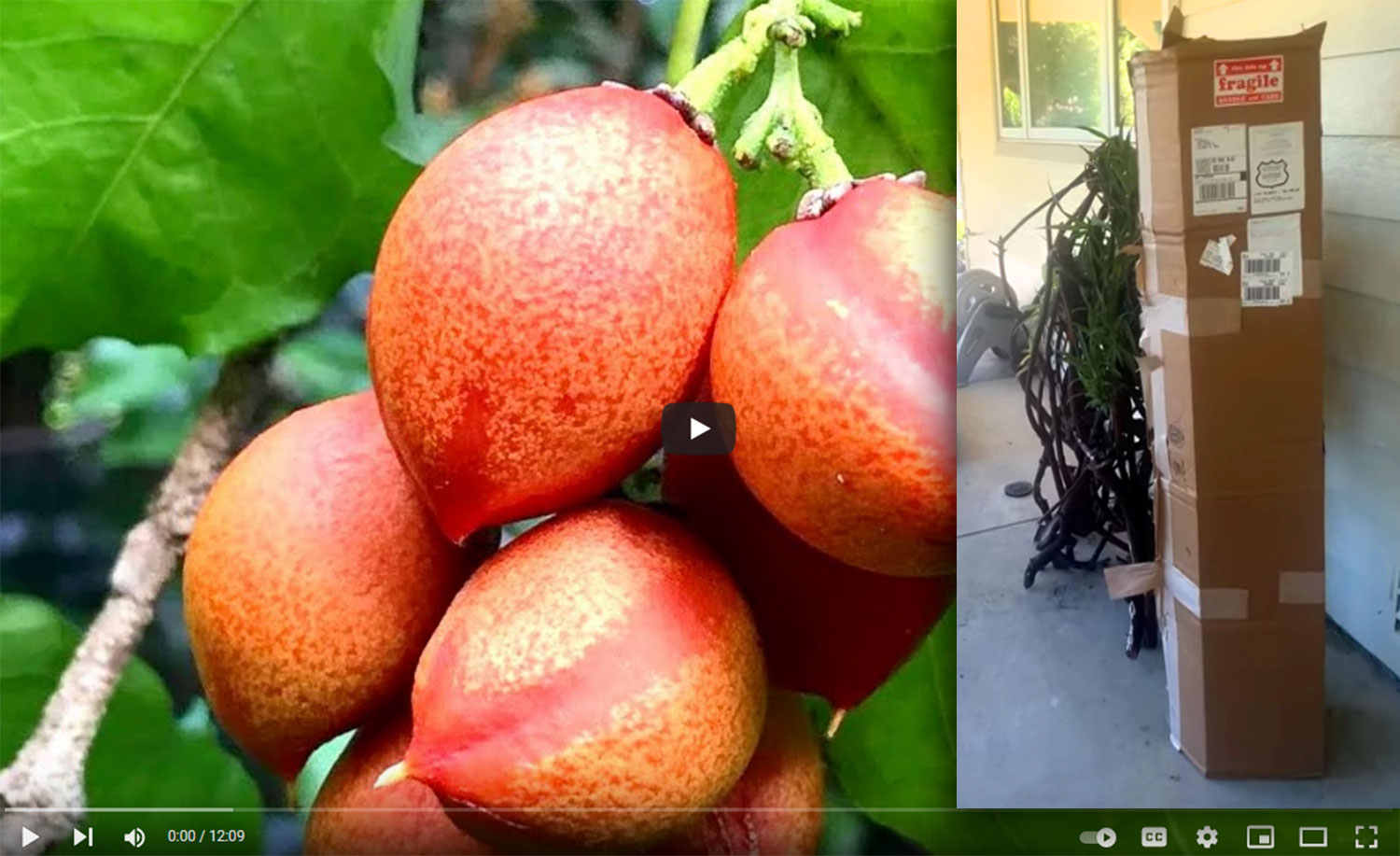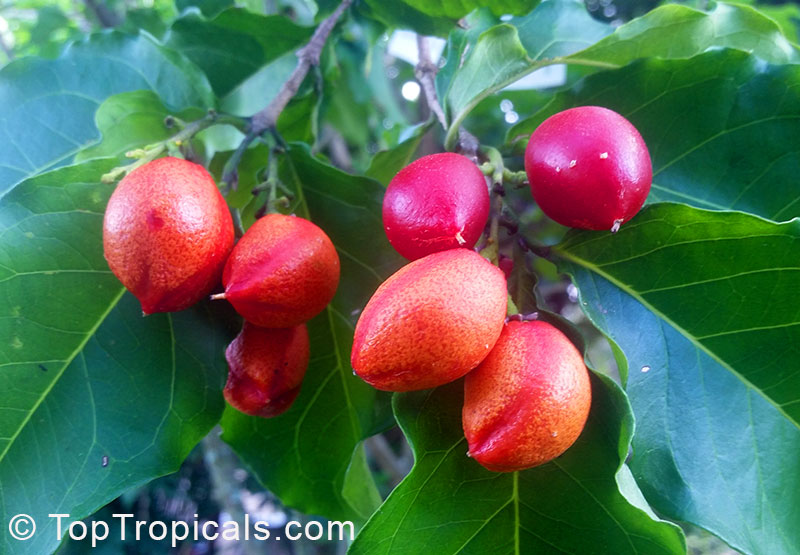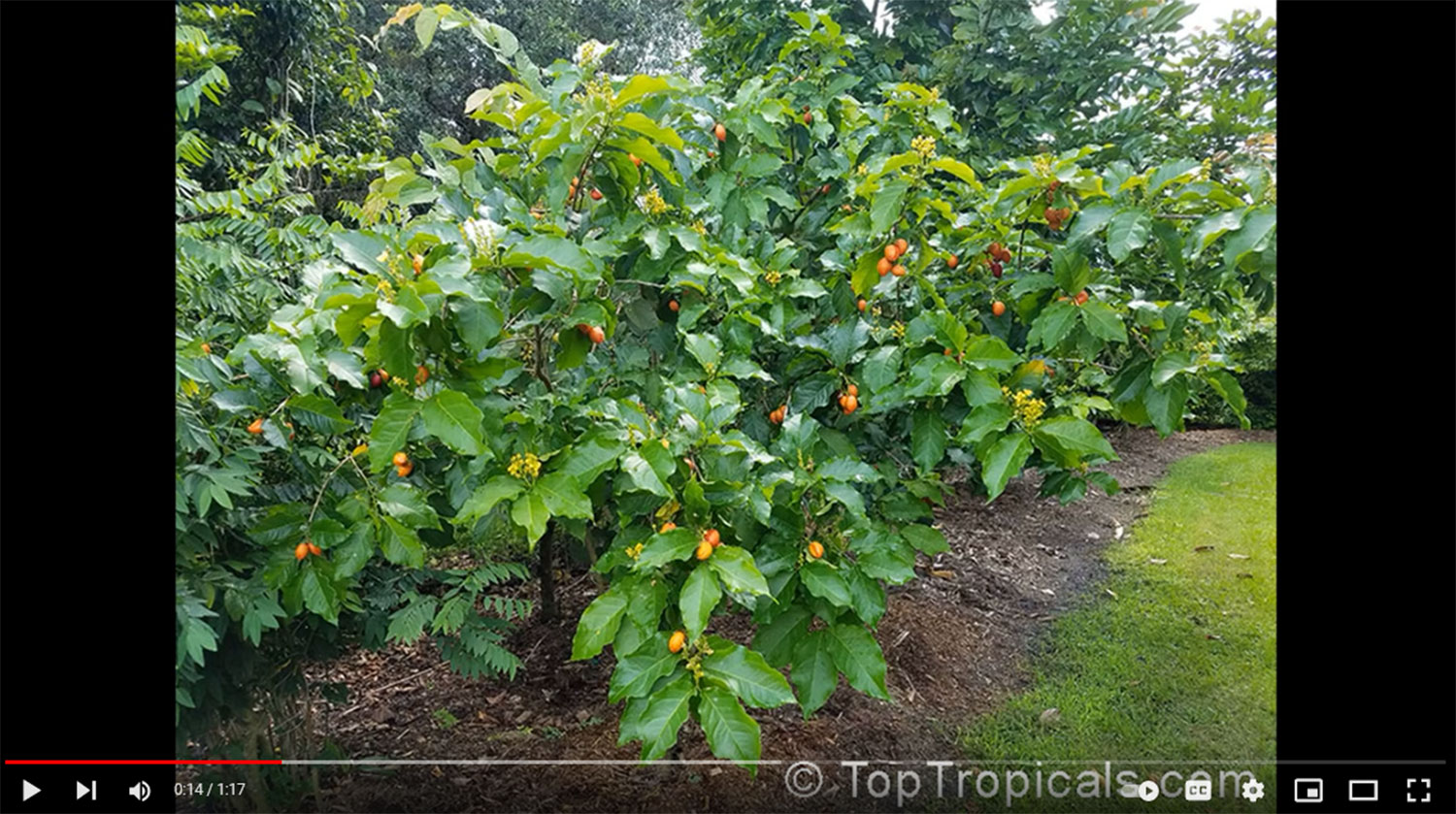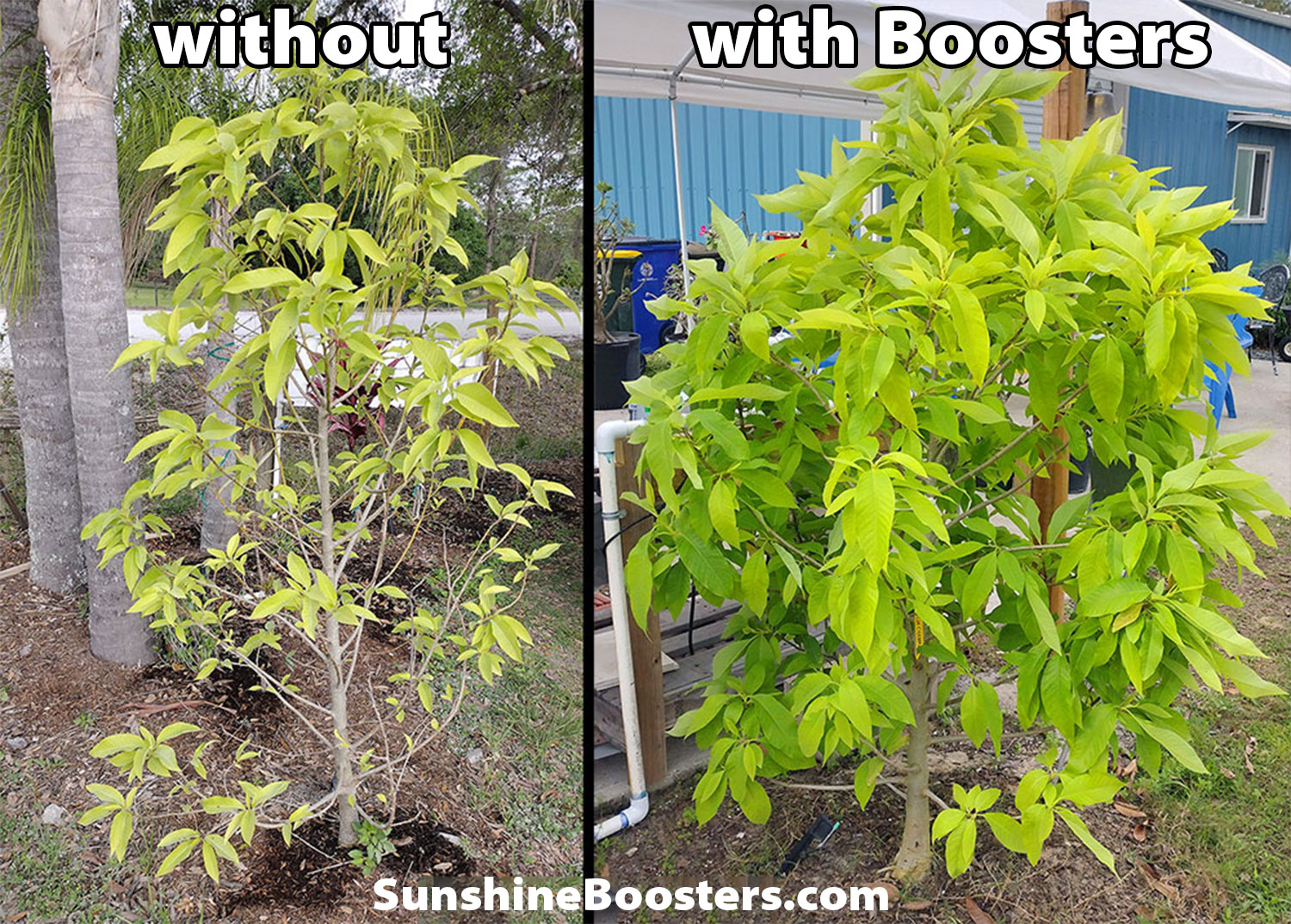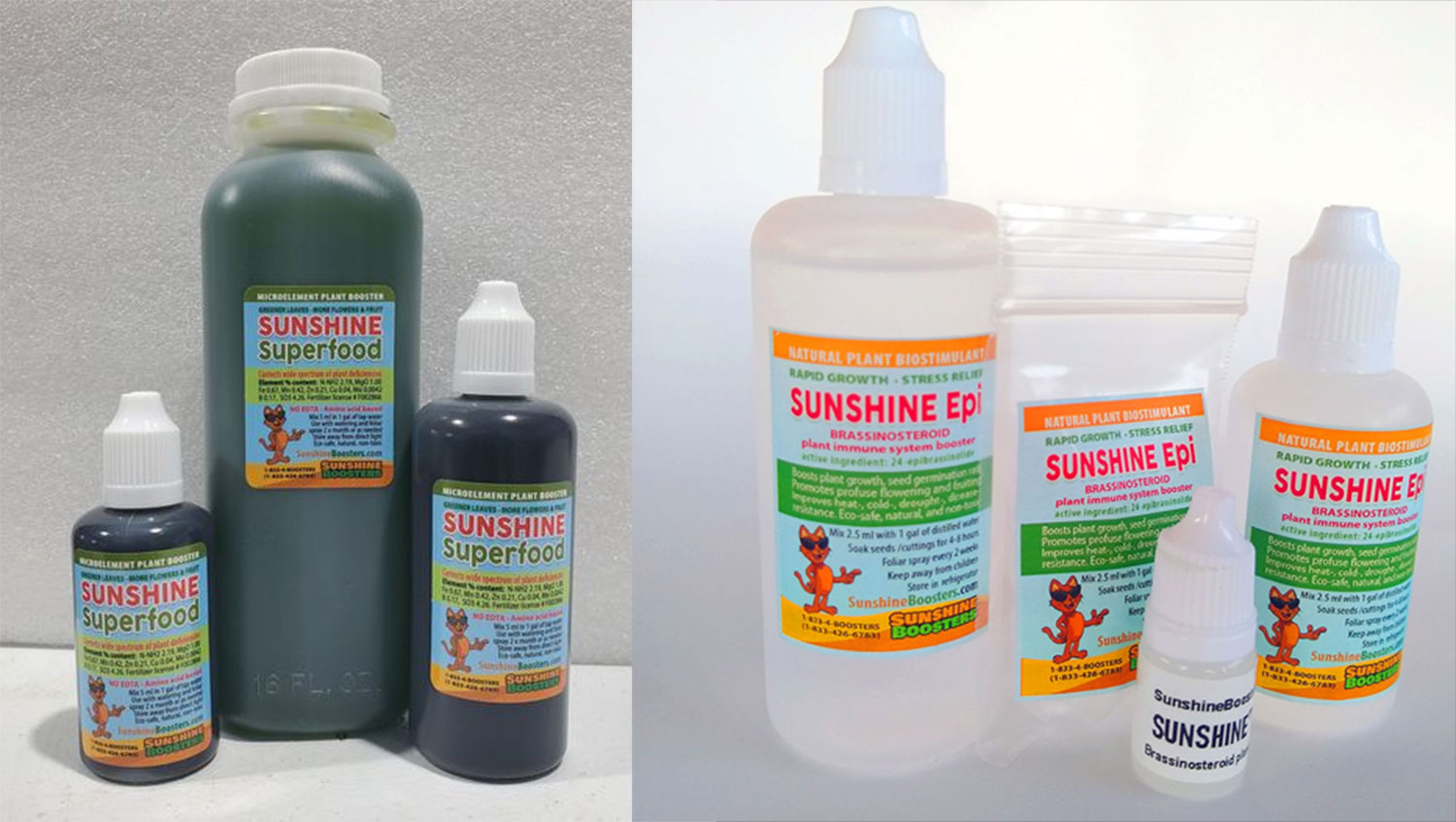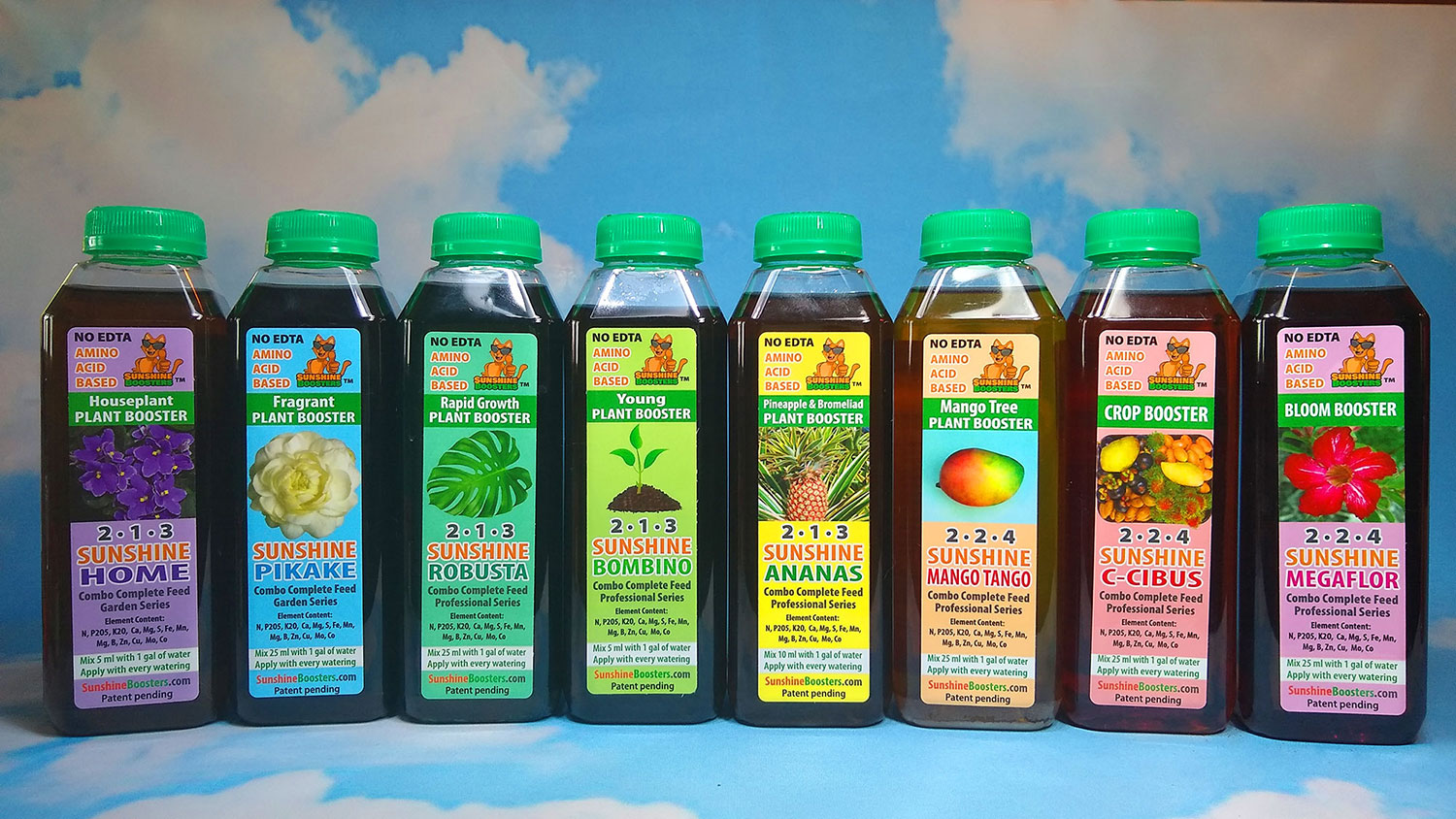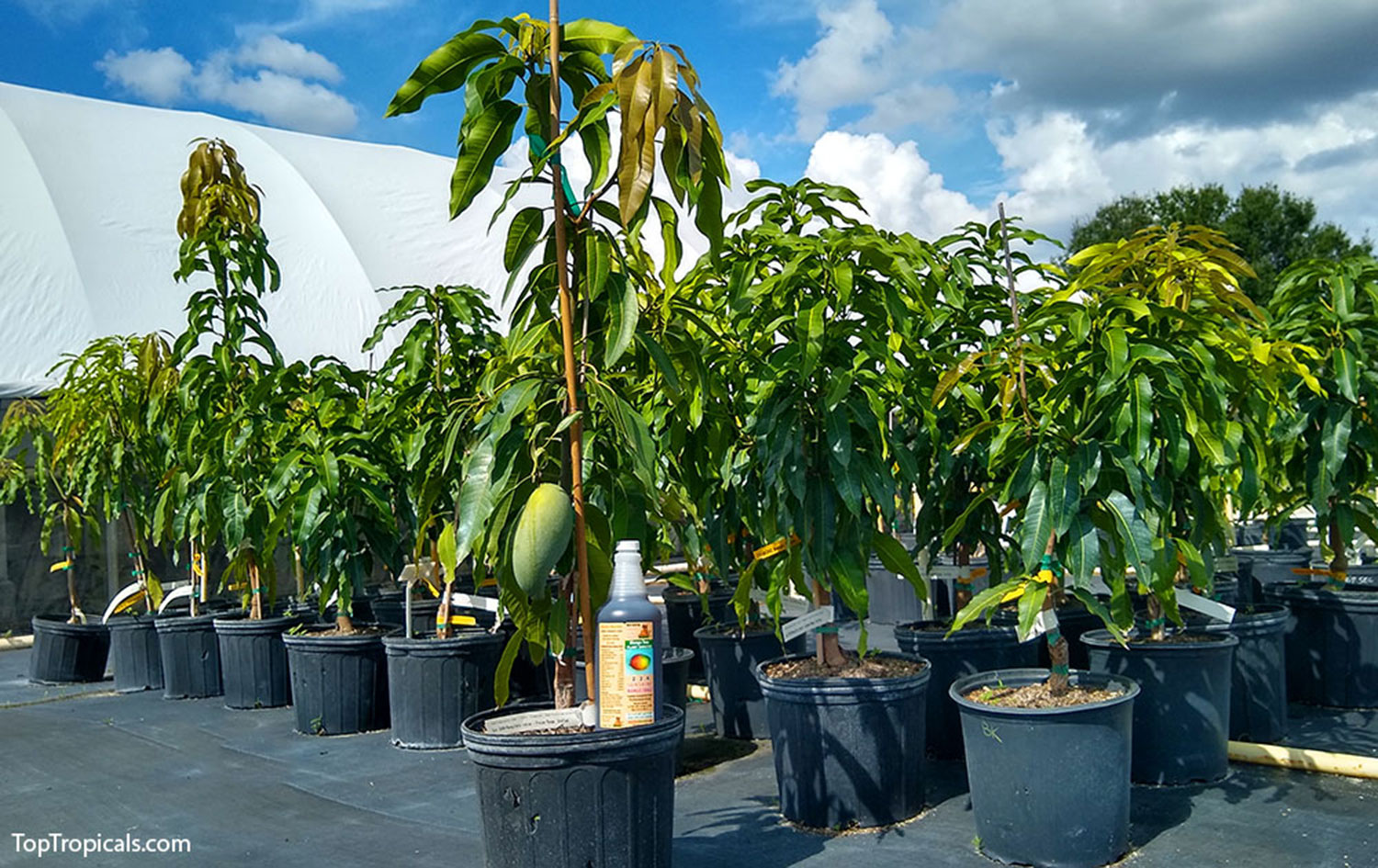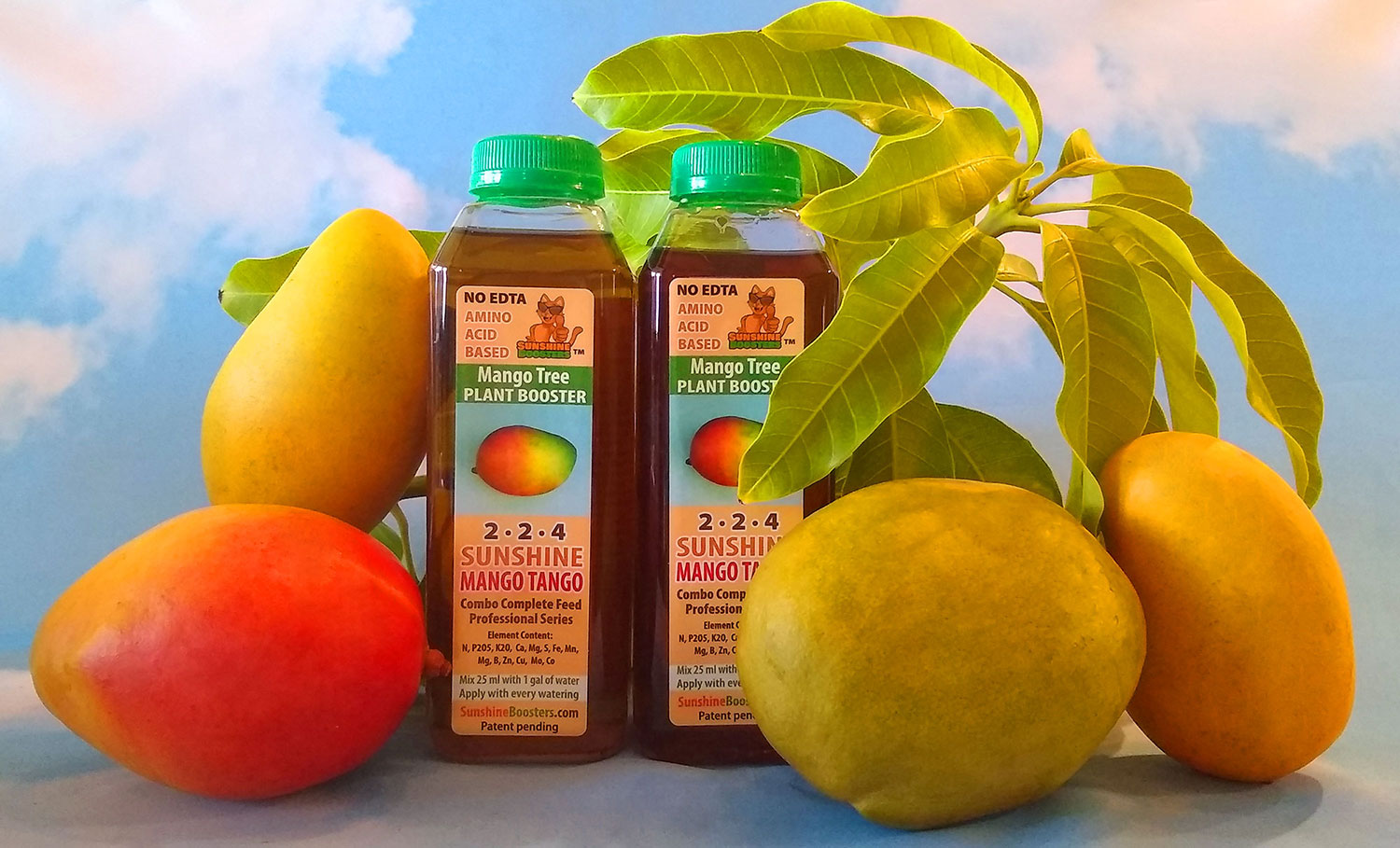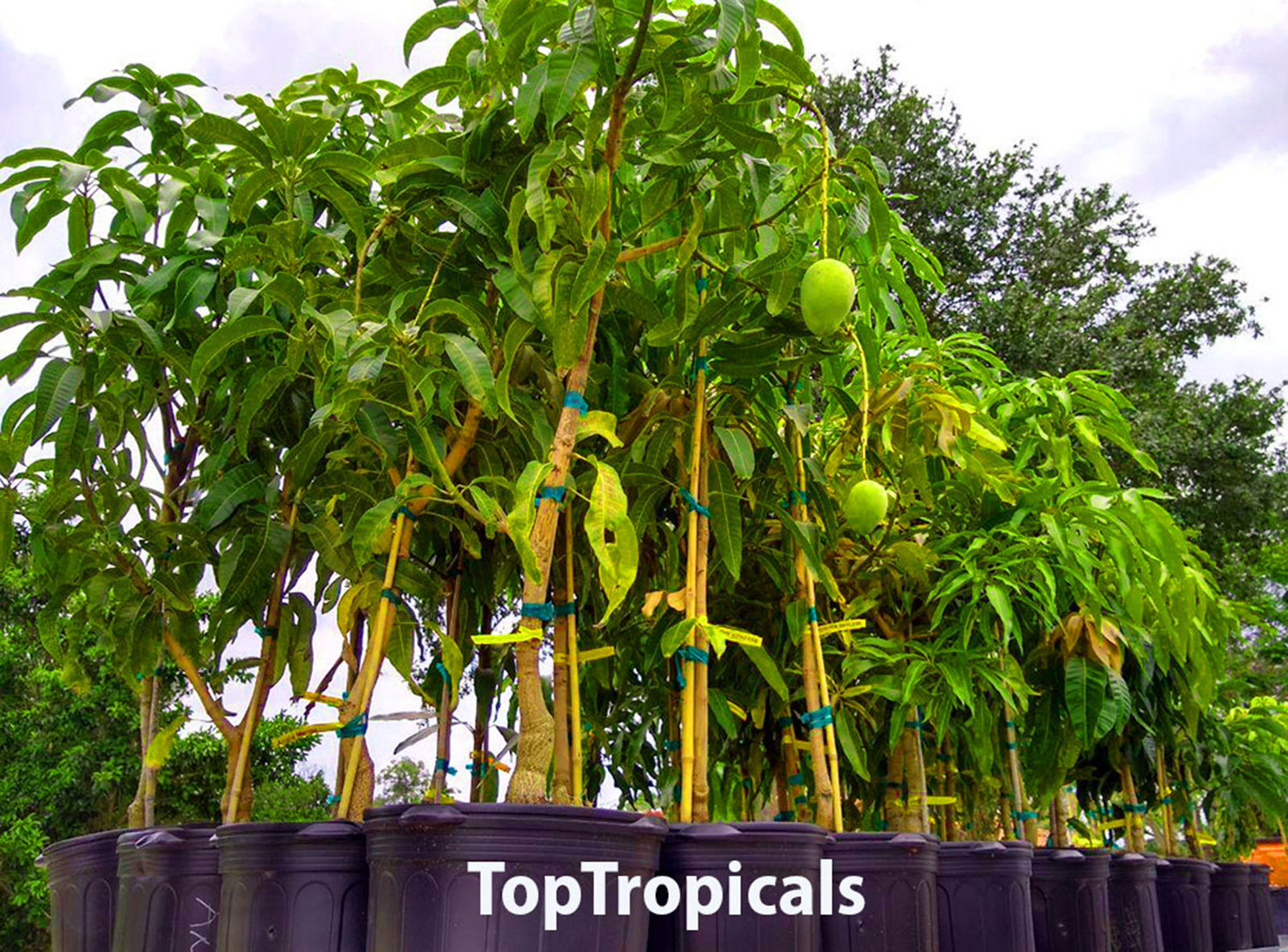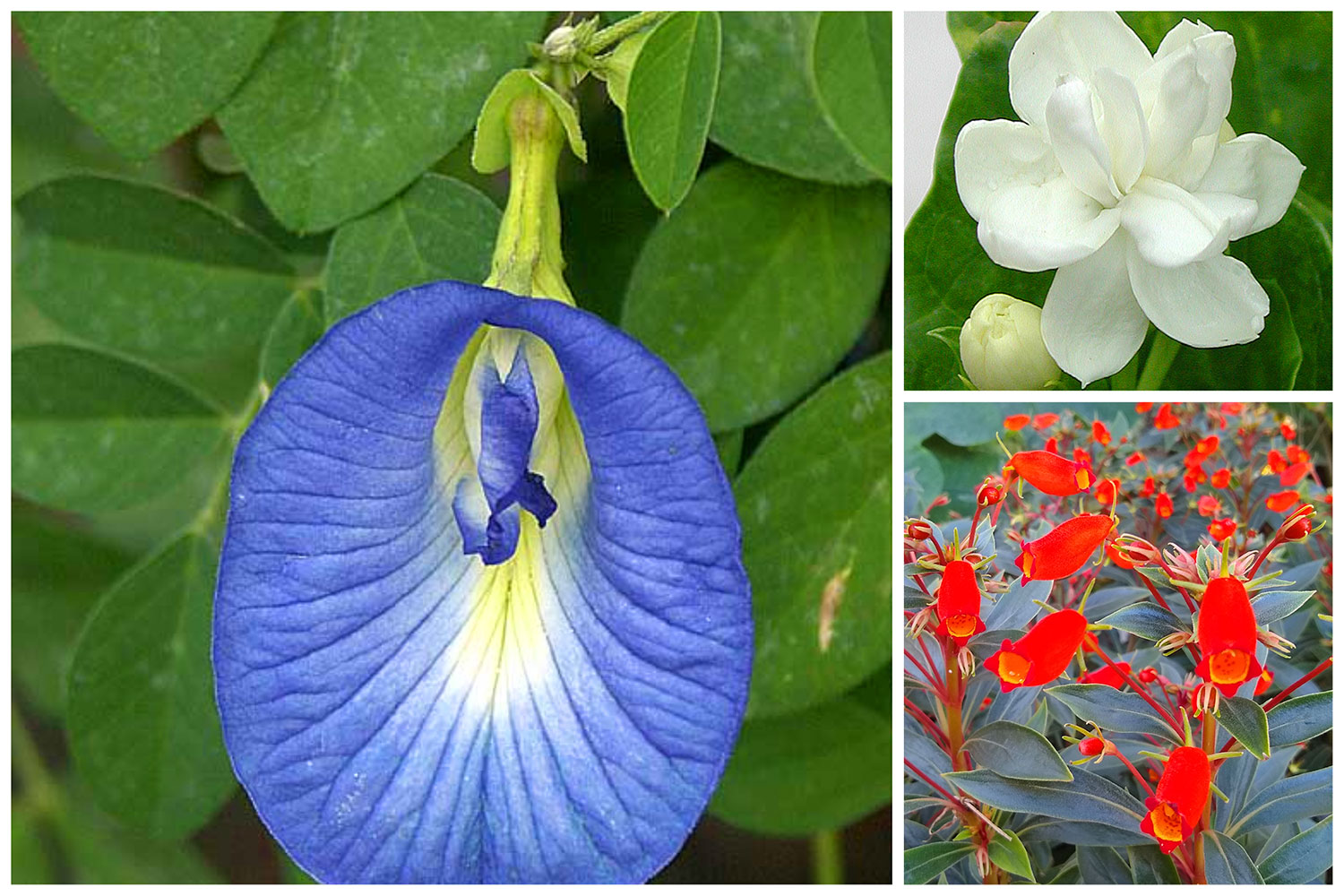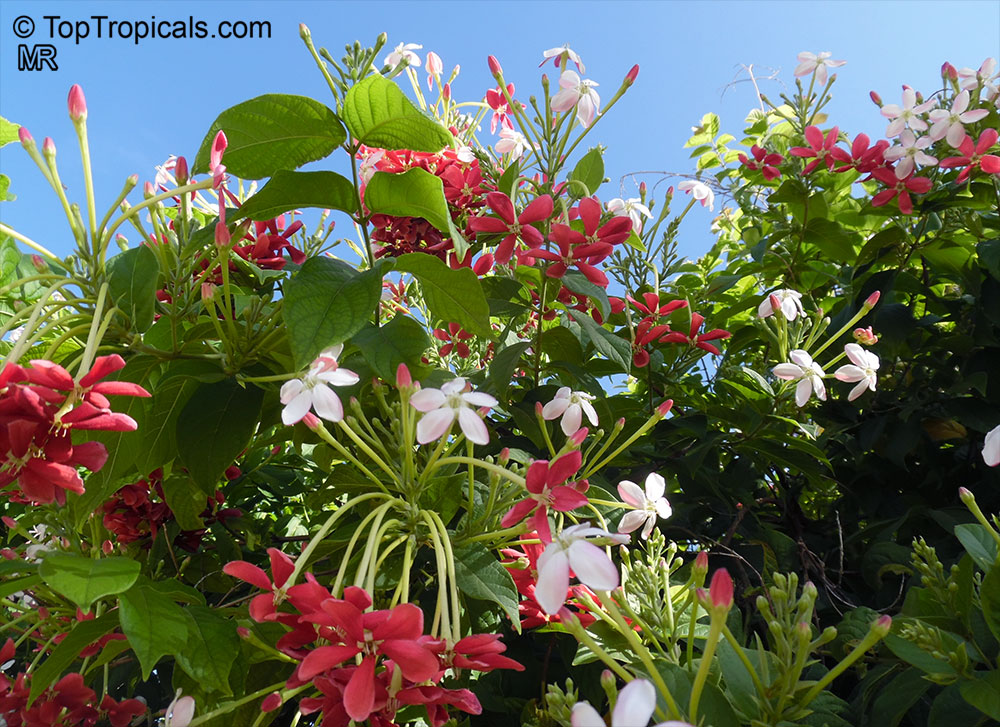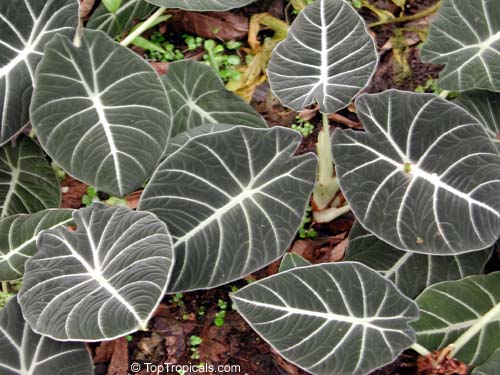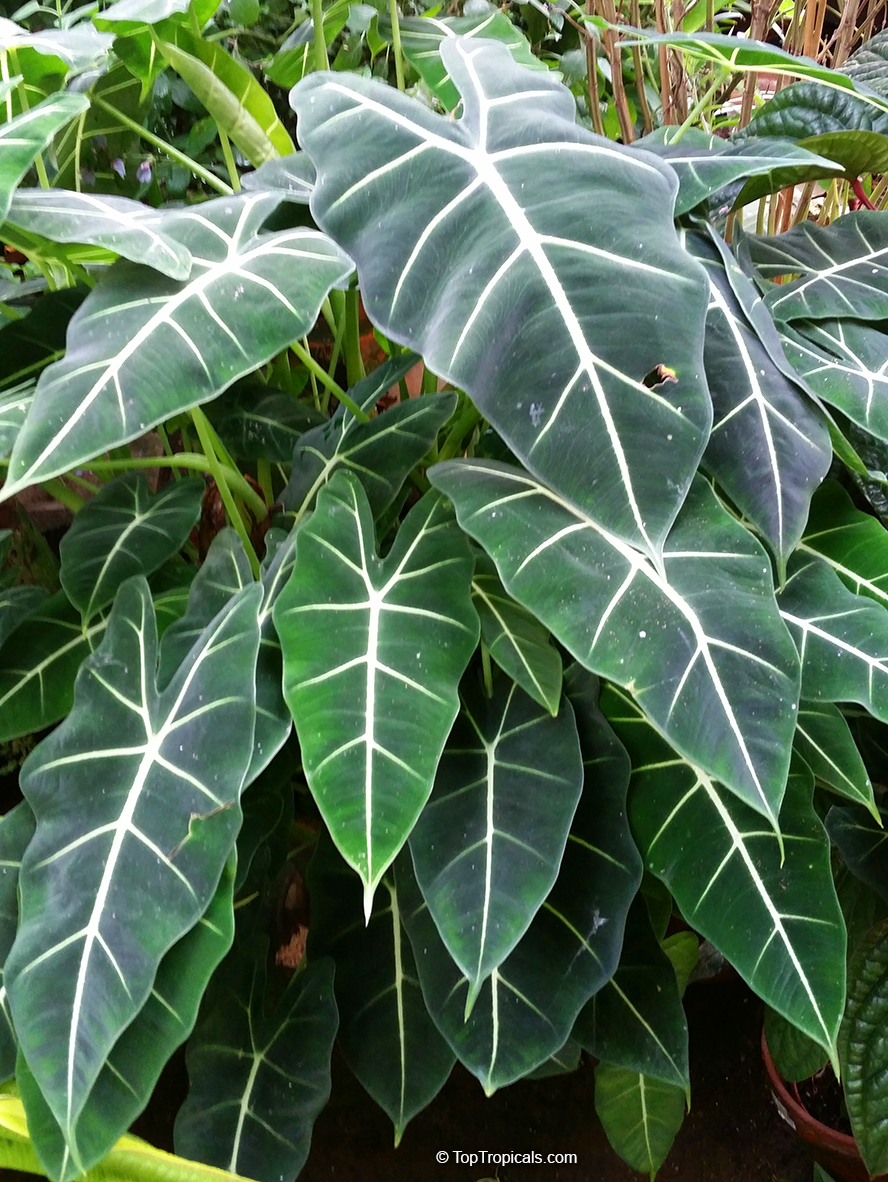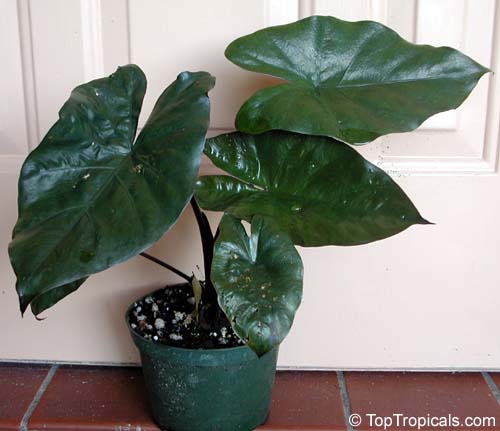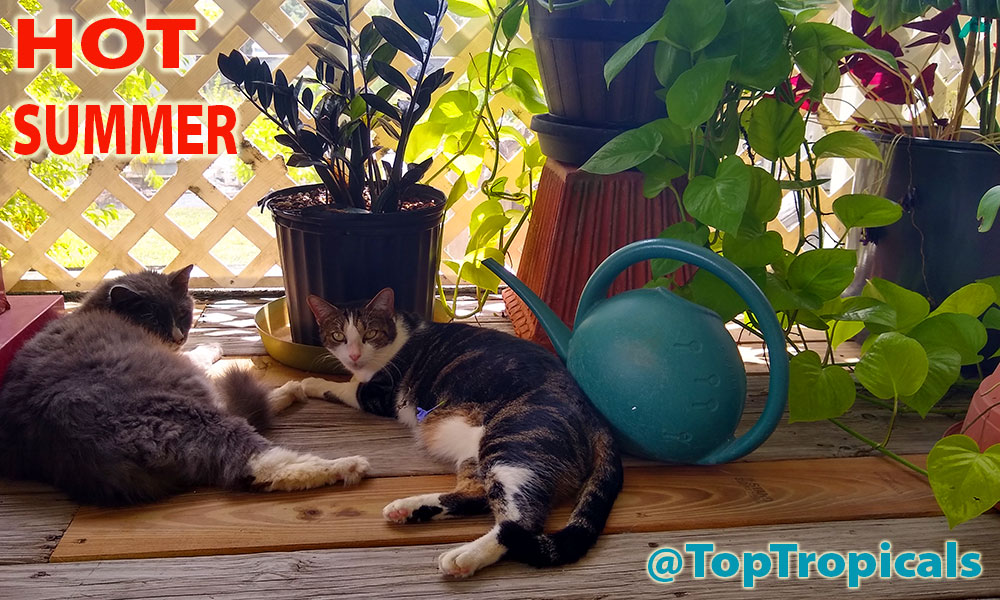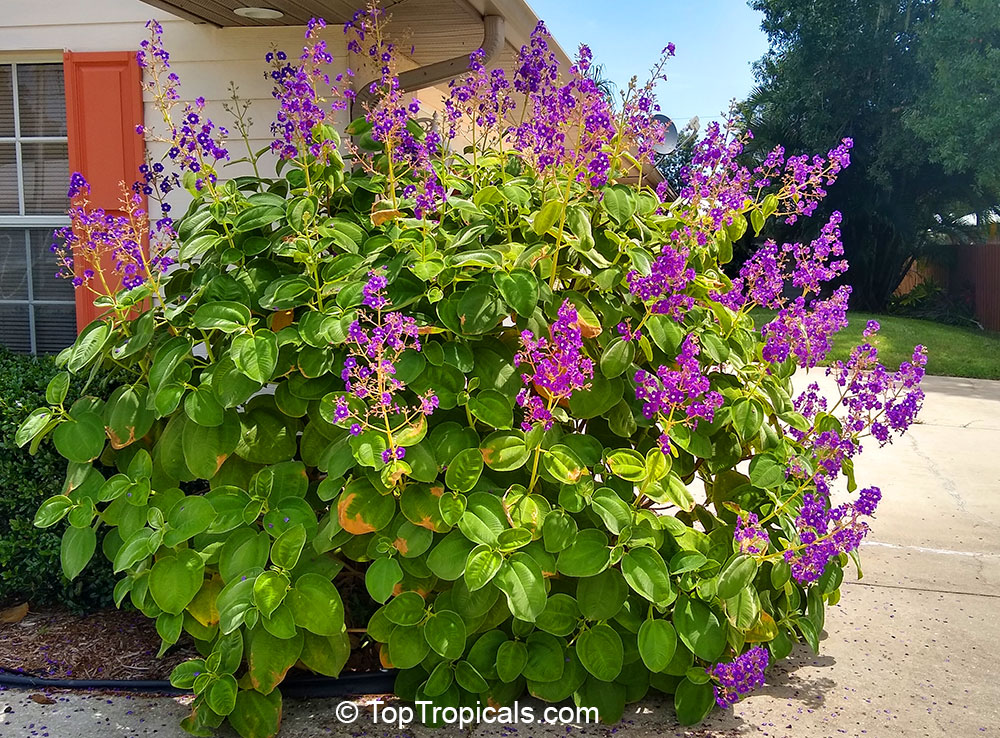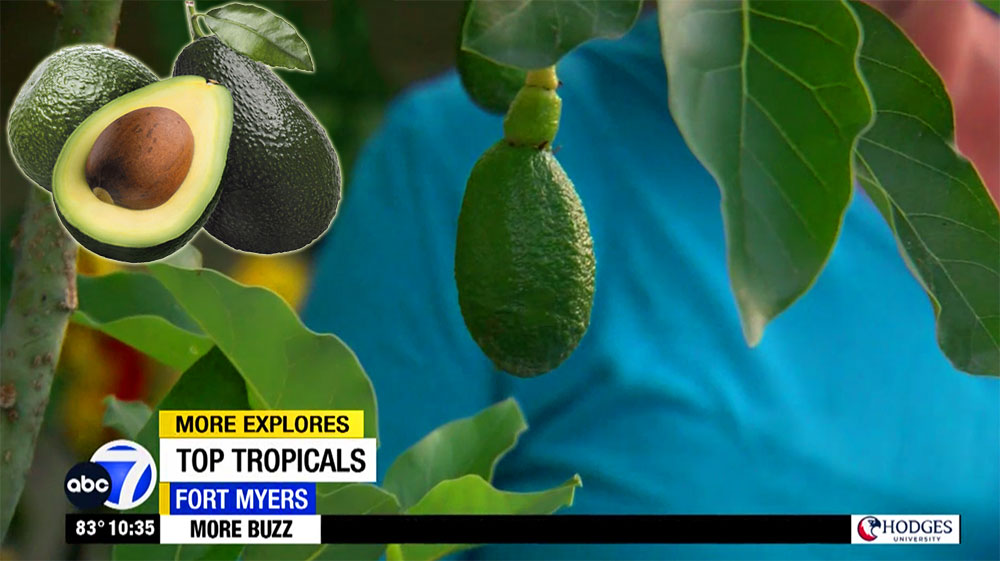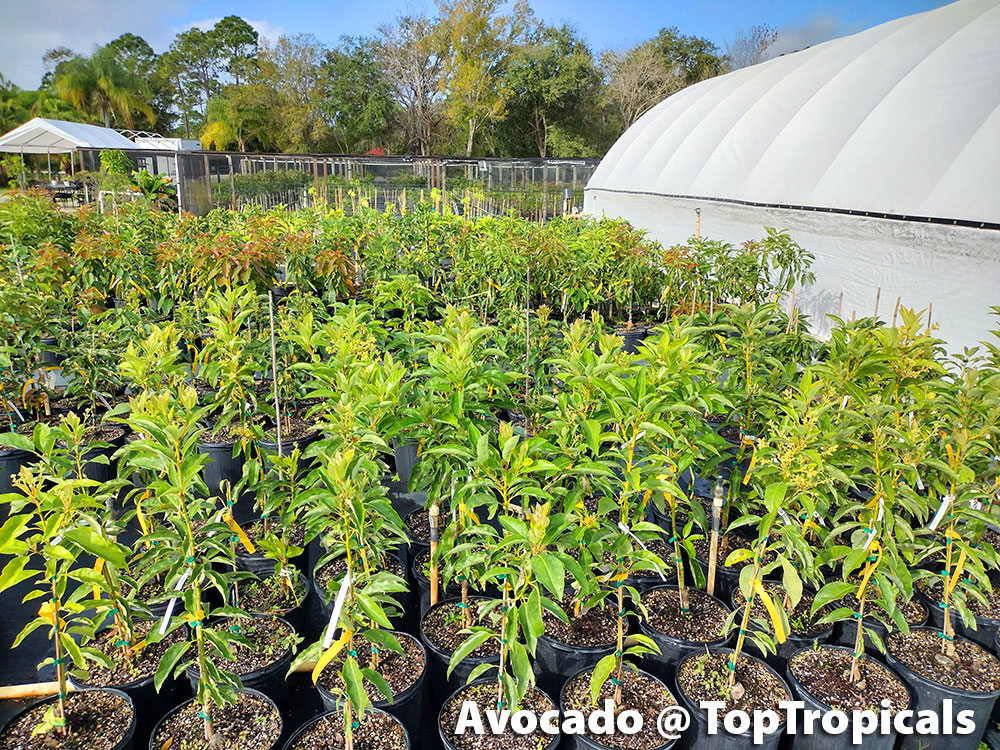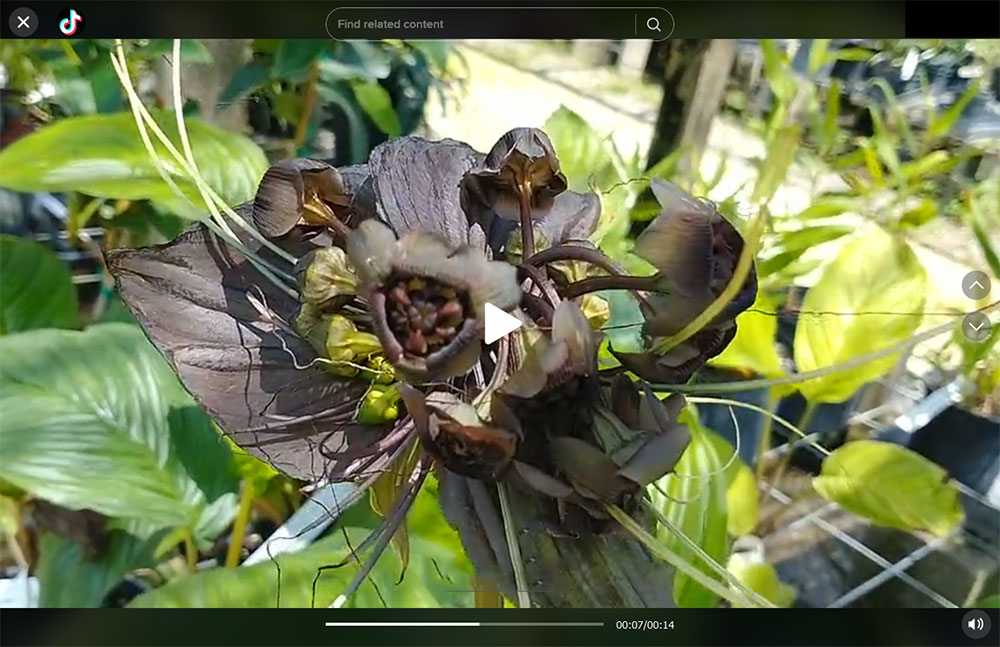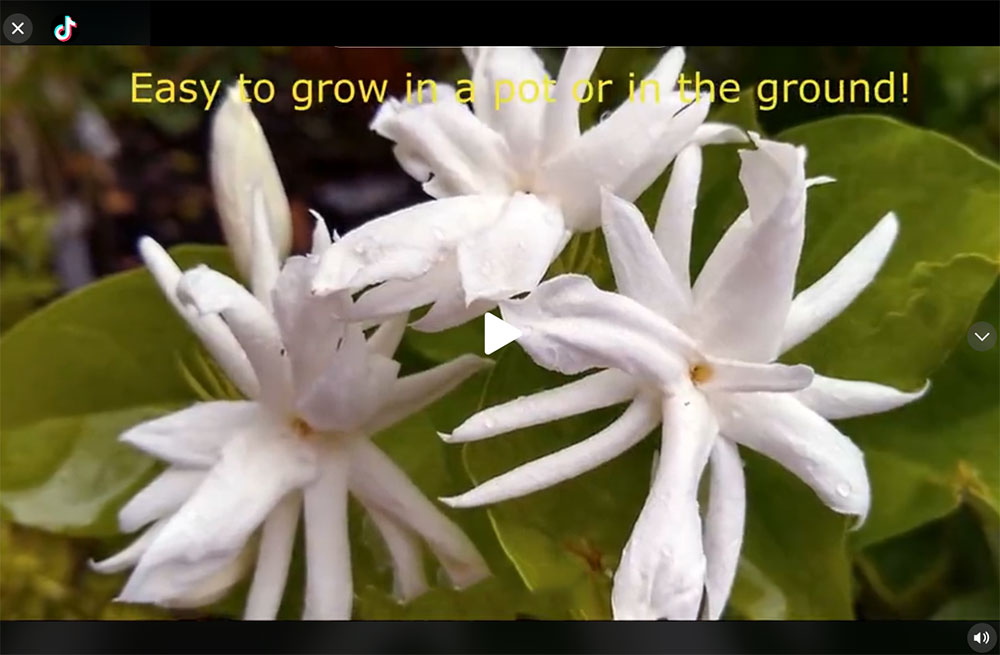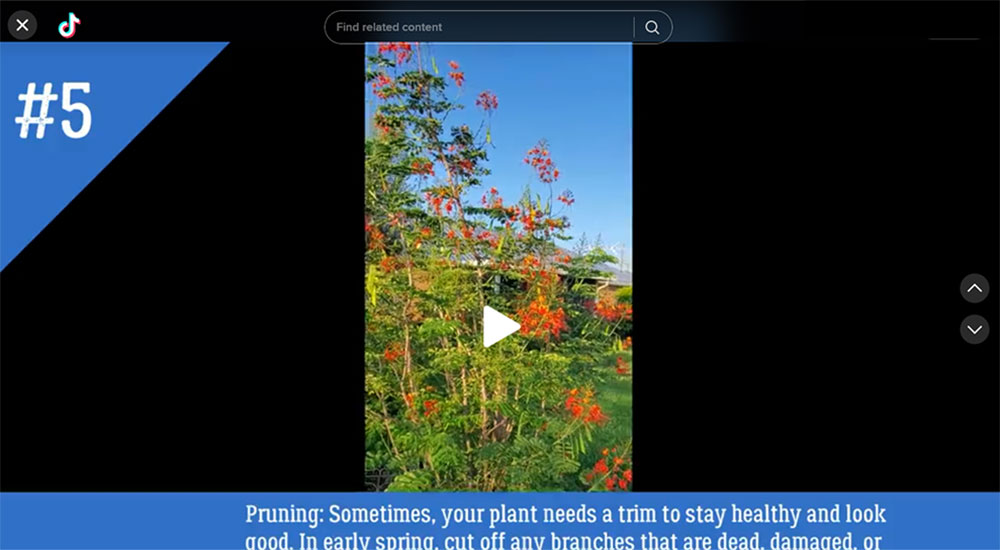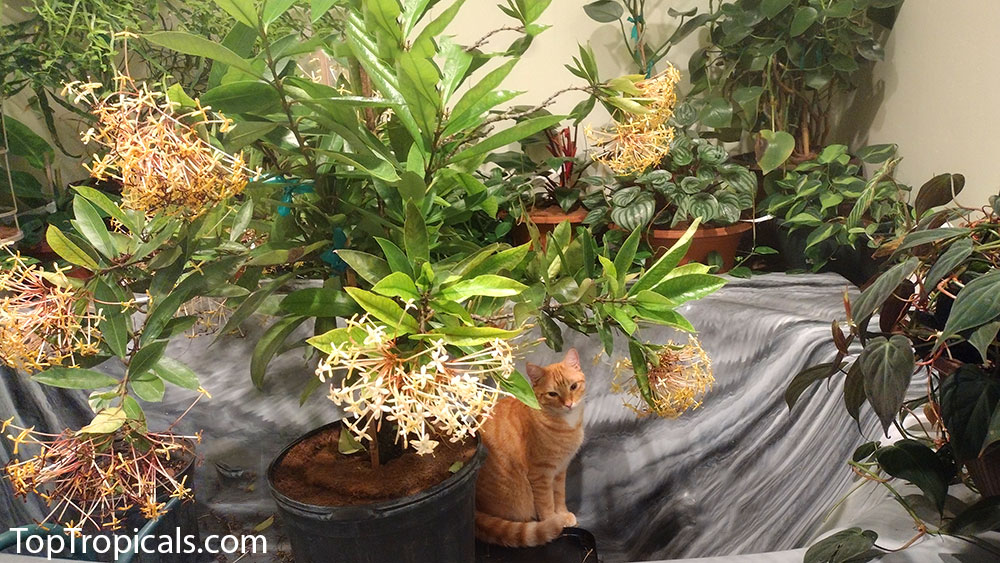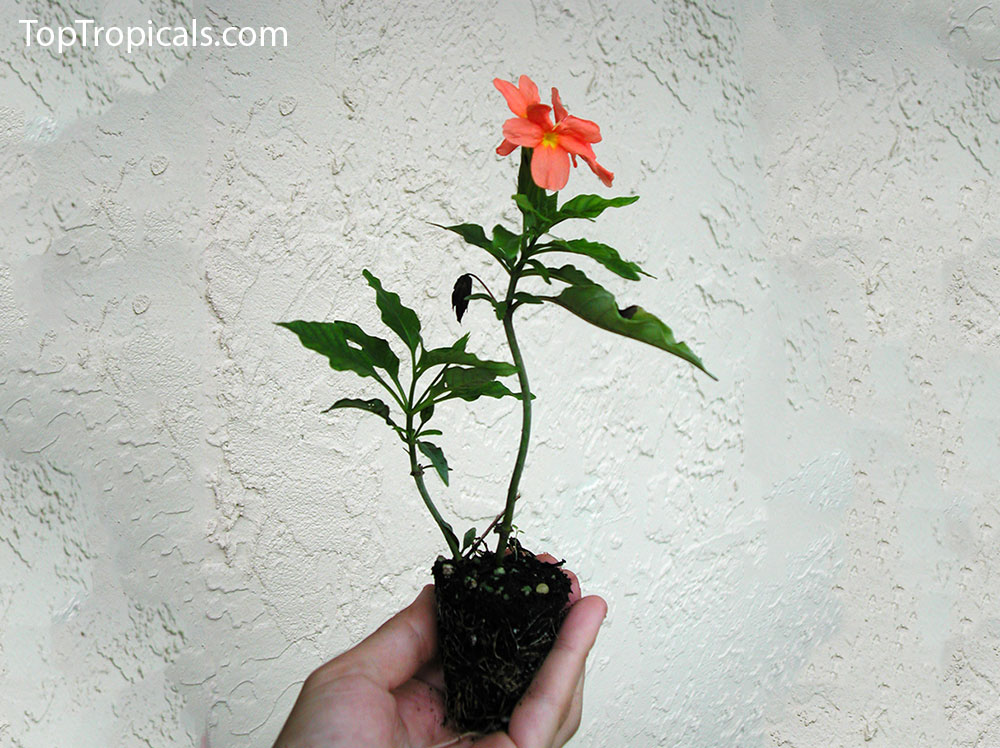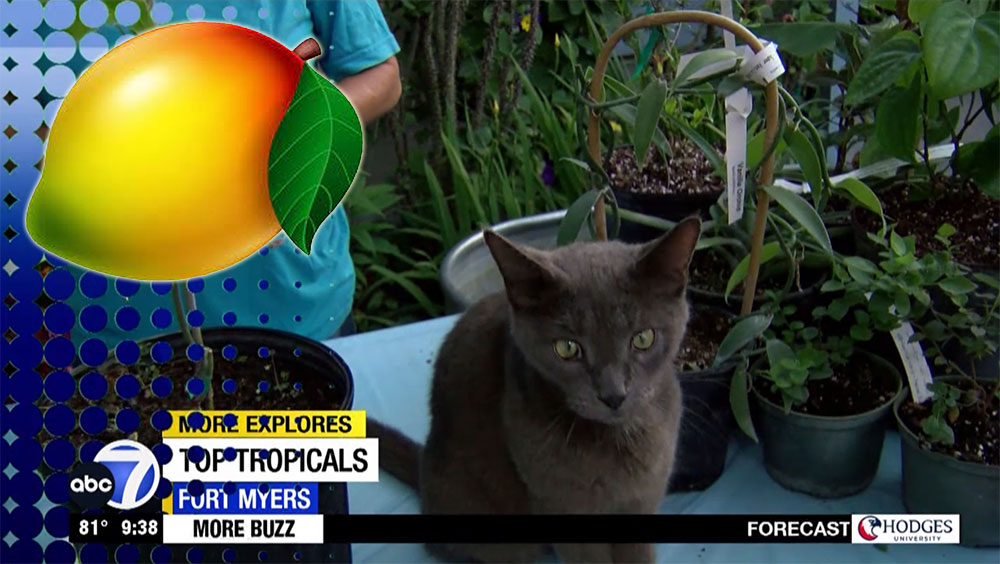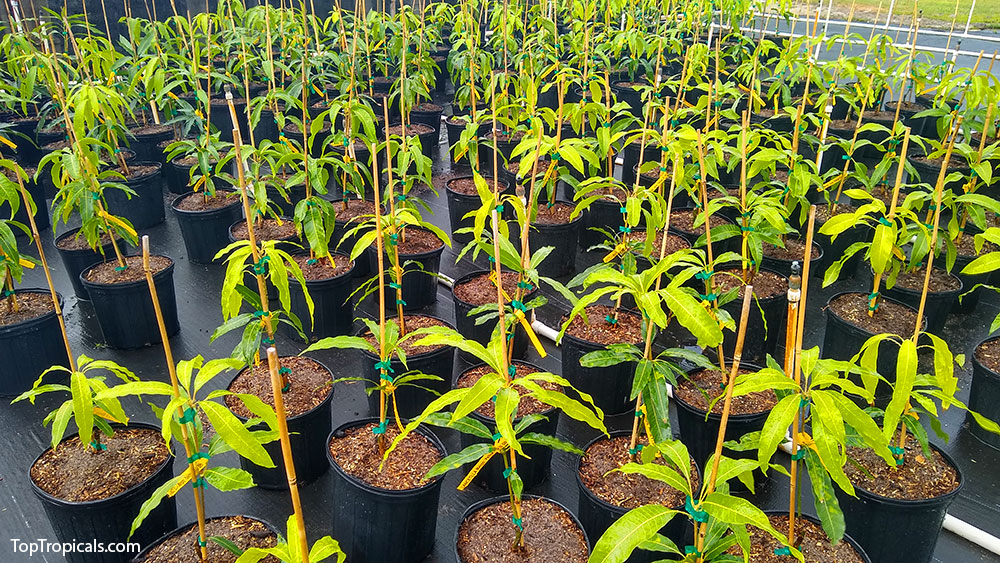Date:
NEW VIDEO:
My new, rare, exotic fruit tree -
the Peanut butter fruit tree from Top Tropicals
By Scott Riddle
Ready to dive into your first-time mail-order plant experience? If you've ever been curious about what really happens when plants take a trip through the mail, this is the video you've been waiting for!
Get ready to embark on a mail-order gardening adventure with the one and only Scott Riddle, our customer from sunny California! What just landed in his mailbox was a package from Top Tropicals... This isn't an ordinary delivery - it's a Bunchosia argentea, a.k.a. the quirky Peanut Butter Tree!
You didn't know that peanut butter can grow on a tree?... Here at Top Tropicals we have a tree for everything - even for growing donuts!
And hey, it's not just about plants - Scott's got an artsy YouTube channel too! Brace yourselves for a rollercoaster of gardening escapades and loads of fun videos. Don't be shy, hit that like button, share the green-thumb goodness, and of course, make sure you subscribe!
Watch our original Peanut Butter Tree video:
Subscribe to our Channel:
Stay updated with TopTropicals Videos by subscribing to our channel at YouTube.com/TopTropicals and get our latest video news of what is fruiting and blooming!
